The Weekly Mash
So, I’m trying something new. A weekly round up of thoughts, drams, updates, reminders and anything else that’s passed through my brain in the last seven days that I think might be of interest. Most is whisky-related but not everything.
Let me know what you think.
Dave
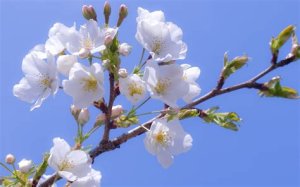
Seasonally Affected Drams
While the idea of eating seasonally is hardly a new concept – I’m only eating asparagus at the moment – Japan takes this seasonal approach to forensic level. Rather than four seasons, its lunar calendar was divided into 24 seasons, each of which which subdivided into three, resulting in 72 micro-seasons of around five days.
Within these, each food had three stages: hashiri (expectation), shun (the best time to eat), and nagori (the last bites – and the preparing for what comes next). It allows you to be intensely aware of the inevitability of change and the need to grasp each moment as it comes.
You can apply this principle to whisky’s maturation cycle. The nerviness of hashiri at the start, shun at peak maturation and nagori as the spirit tires and the oak begins to take over.
It even works in the palate – the anticipation on the tip of the tongue, the resolution in the middle where everything (should) cohere, then the fading away, often with a tinge of bitterness on the finish.
Seasonality can also be used if you are stuck when trying to nail an aroma. One way to get around this mental block is to ask what season the whisky is. Suddenly the answers come. It’s spring like? Why? Grass, apple, blossom, freshness and a bite. Which is a roundabout way of saying it was a treat to find two springlike whiskies on the table.
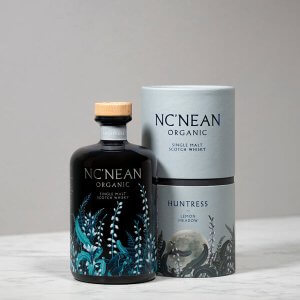 The first is ‘Lemon Meadow’ (48.5%, £85.95), this year’s limited Huntress release from Nc’nean and the first to be released from their annual yeast trials (this is from a sparkling wine/ Champagne yeast), which is enough to get any geek excited.
The first is ‘Lemon Meadow’ (48.5%, £85.95), this year’s limited Huntress release from Nc’nean and the first to be released from their annual yeast trials (this is from a sparkling wine/ Champagne yeast), which is enough to get any geek excited.
There’s a initial buttery/white chocolate softness, rapidly followed by green apple and lemon curd/yuzu marmalade brightness.The higher alcohol gives it great drive and energy.
The palate has a crisp, biscuity element accompanied by white fruits, then a lovely thickening in the centre with yellow plum, and a burst of fizzing spice at the end. Water isn’t your enemy here, adding lift and grassiness to the nose. While the palate is softens down further, it never loses the pithy citrus. You’re left with a mix of ginger and flowers.
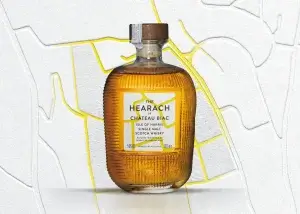 The second is the rather grandly titled The Hearach of Chateau Biac (50%, £125) which is Harris whisky aged wholly in French oak casks that have previously held the sweet wine (a blend of Sémillon/Sauvignon Blanc) from the estate in Langorian on the right bank of the Garonne.
The second is the rather grandly titled The Hearach of Chateau Biac (50%, £125) which is Harris whisky aged wholly in French oak casks that have previously held the sweet wine (a blend of Sémillon/Sauvignon Blanc) from the estate in Langorian on the right bank of the Garonne.
I often have a problem with wine casks. A short period of finishing can end up with the wine flumping onto the palate in a mess of fruit. There’s no integration of wine + wood with the maturing whisky. Not here.
This starts with pastries, a green spring-like freshness, lemon sherbet, along with the Hearach’s gentle smoke, some hot sand, then William pear. The Chateau Biac’s influence comes into focus on the palate adding peach stone, sweetness, a thicker texture and acidity, balanced with light oak.
Water pulls the smoke closer to the core of machair flowers, and the silkiness from the wine. There’s also a lovely, integrated, gentle and reassuring depth from the oak. It bids farewell with a burst of lemon thyme.
Both are well worth seeking out and enjoyed slightly chilled, or with water, or as Highballs.
The Hearach is sold out but I’m sure it’s behind some bars.
No scores? If I’ve written about it, I like it.
——————-

A Musing : Struie success
After writing this week about the fallout from Diageo’s withdrawal from Distell Ventures and the ongoing Waterford saga, it’s good to see that other investment schemes are doing well.
The Thompson brothers’ crowdcube funding for their new Struie distillery in Dornoch had what seemed a bold target of £1,8m. Thank to 702 investors, it ended with a total of £2.4m, even with the clear warning that it was a high-risk investment and any backer could lose their money.
Why the enthusiasm? Could it be that they’ve proved themselves and are making some of the most exciting whiskies in Scotland?
———

Indian Insights
It’s always good to know what whisky drinkers like. For the past five years, India’s Single Malt Amateur Club (SMAC) has undertaken a survey of its members, asking them to name their top standard (< INR 6,000) and premium (> INR 6,000) domestically-made single malts, as well as the ones they’d most like to try.
In 2024, they were also asked about their top sherry/wine-influenced and peated brands. It makes interesting reading, especially since Indian made single malt now outsells Scotch in its home market.
In the standard category, Amrut Fusion and Indri Trini are virtually tied in first place – representing a significant rise for the latter as well as a growing love of sherried styles, while the appearance of Paul John Bold in 5th place shows that interest in smoky drams is increasing. Paul John also had three of the five top places in the peated category.
A liking for cask treatments emerged in the premium category. While Paul John Mithuna (virgin oak finished in ex-Bourbon) retained its top place, it was pushed hard by Godawan 01 and Rampur Double Cask. Godawan is finished in casks which have been treated with Indian botanicals, while Rampur’s Double Cask is a ex-bourbon/sherry creation.
Perhaps the most interesting finding were the answers given for whiskies which the respondents wanted to try. Although some of the limited editions from the big four (Amrut and Paul John) were there in the standard category, the rest of the list was made up from lesser-known brands, indicative of what is a fast-growing category with new players emerging, as well as a widening of drinkers’ portfolios.
The most-wanted was GianChand from Jammu-based Devans, with Dōaab India Craft made by Globus Spirits; Ugar Sugar Works’ first foray into single malt, and Goa’s Imperial Distillers’ Three Monkeys also showing strongly.
Kamet, Longitude 77, and Solan Gold however all fell. Whether this was due to greater availability or flavour wasn’t clear.
In premium it was the Amrut which held sway, its Fusion X, XI and Bagheera, were all must-try’s, along with Indri’s Diwali 24. All in all, India remains a buoyant whisky market.
My thanks to Hemanth A. Rao of SMAC for the information
—-
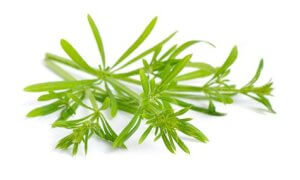
In My Glass
A recent mishap and consequent medication has meant I’ve been aff the drink but, as you can see above, I’m easing myself back in.
The Pavlovian response to hot weather is drink long, and the garden has given me its annual surplus of sticky willy/goosegrass/cleavers. A few strands steeped in water overnight produces a cool grassy/cucumber-like result. Apparently it’s good for the lymphatic system and makes you beautiful. I’ve been adding mint to the mix and now that the two month long booze ban is over, will start experimenting. Run it through a soda stream? There’s so much of the bloody stuff in the back yard that this could be a profitable side hustle.
—————-
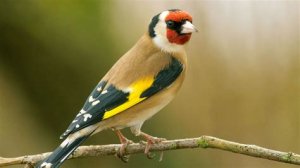
Sounds
The goldfinches are back, their song like bubbles in a fast-flowing burn, a calming contrast to the treetop battle between the blackbird and robin. I’m also not long back from a great gig from Daisy Rickman and her rather marvellous band (shout out to the drummer) giving us psych folk which at times was like listening to a mystic Cornish coupling of the Velvets (with Nico), Fairports (A Sailor’s Life era), C.O.B and the Incredible String Band. All good in my book and the perfect way to bring in Beltane. Buy her album.
Bye!